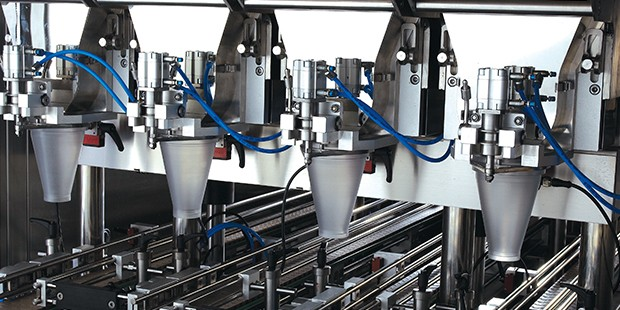

In pharmaceutical production, where precision and efficiency are non-negotiable, automatic bottle labeling machines play a vital role in ensuring consistent, compliant packaging. Unlike manual labeling— which is slow, error-prone, and unable to keep up with high-volume demand—automatic systems streamline the process while maintaining strict quality standards. At Pharmapack, as a leading labeling machine manufacturer, we design our automatic bottle labeling machines to be intuitive, reliable, and tailored to the pharmaceutical industry’s unique needs. Understanding how these machines work is key to choosing the right equipment for your production line, so let’s break down their core functionality step by step.

Bottle Feeding and Orientation
The process begins with bottle feeding, where the machine receives empty or filled bottles (depending on your workflow) from a conveyor system or bottle unscrambler. Our automatic bottle labeling machines are integrated with precision feeding mechanisms that ensure bottles move at a steady, consistent speed—this is critical for avoiding jams and ensuring accurate labeling. Next, the orientation step aligns each bottle so that the label is applied in the correct position (e.g., centered on the front of the bottle or aligned with a specific marker).
Label Dispensing and Application
Once bottles are oriented, the machine moves to label dispensing. Our automatic bottle labeling machine uses a roll of labels (with adhesive backing) fed through a dispensing unit. The unit peels the label from its backing paper using a small roller or air jet, then positions it precisely for application. The application itself is done via one of two common methods: pressure-sensitive application (where a roller presses the label onto the moving bottle) or wrap-around application (for round bottles, where the label is wrapped around the bottle’s circumference as it rotates). Both methods are designed to ensure the label adheres smoothly, with no bubbles or wrinkles—critical for maintaining a professional appearance and ensuring label durability. Our machines also offer adjustable dispensing speed, allowing you to match it to your production line’s output (up to 200 BPM for high-volume needs).
Quality Inspection and Rejection
No automatic labeling process is complete without quality inspection—especially in the pharmaceutical industry, where defects can lead to compliance issues or product recalls. Our machines are equipped with advanced inspection systems, including UV flaw detection and vision sensors, to check for common issues like missing labels, misaligned labels, or damaged labels. If a defect is detected, the machine triggers an automatic rejection system that removes the faulty bottle from the production line—ensuring only properly labeled bottles move forward.
Conclusion
At Pharmapack, as a trusted labeling machine manufacturer, we enhance these steps with industry-specific features like high accuracy (±0.2mm), user-friendly operation, and seamless integration with end-to-end automation systems. Whether you’re producing small vials or large pharmaceutical bottles, our automatic bottle labeling machines are built to simplify your workflow, reduce errors, and support high-volume production. By understanding how these machines work, you can make an informed decision about the right equipment for your needs—and partner with Pharmapack to elevate your packaging process.